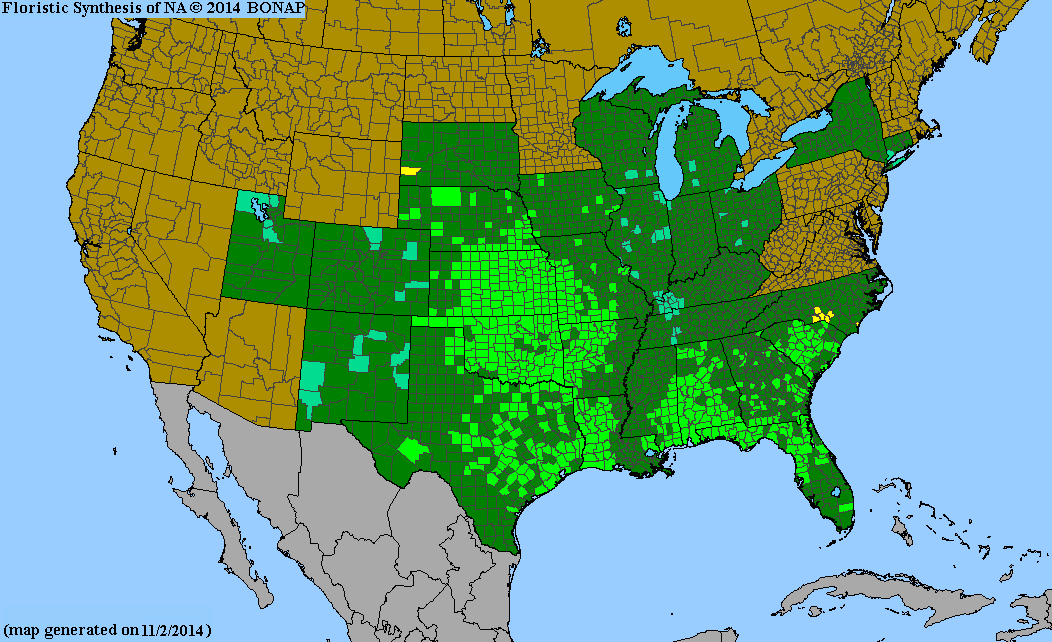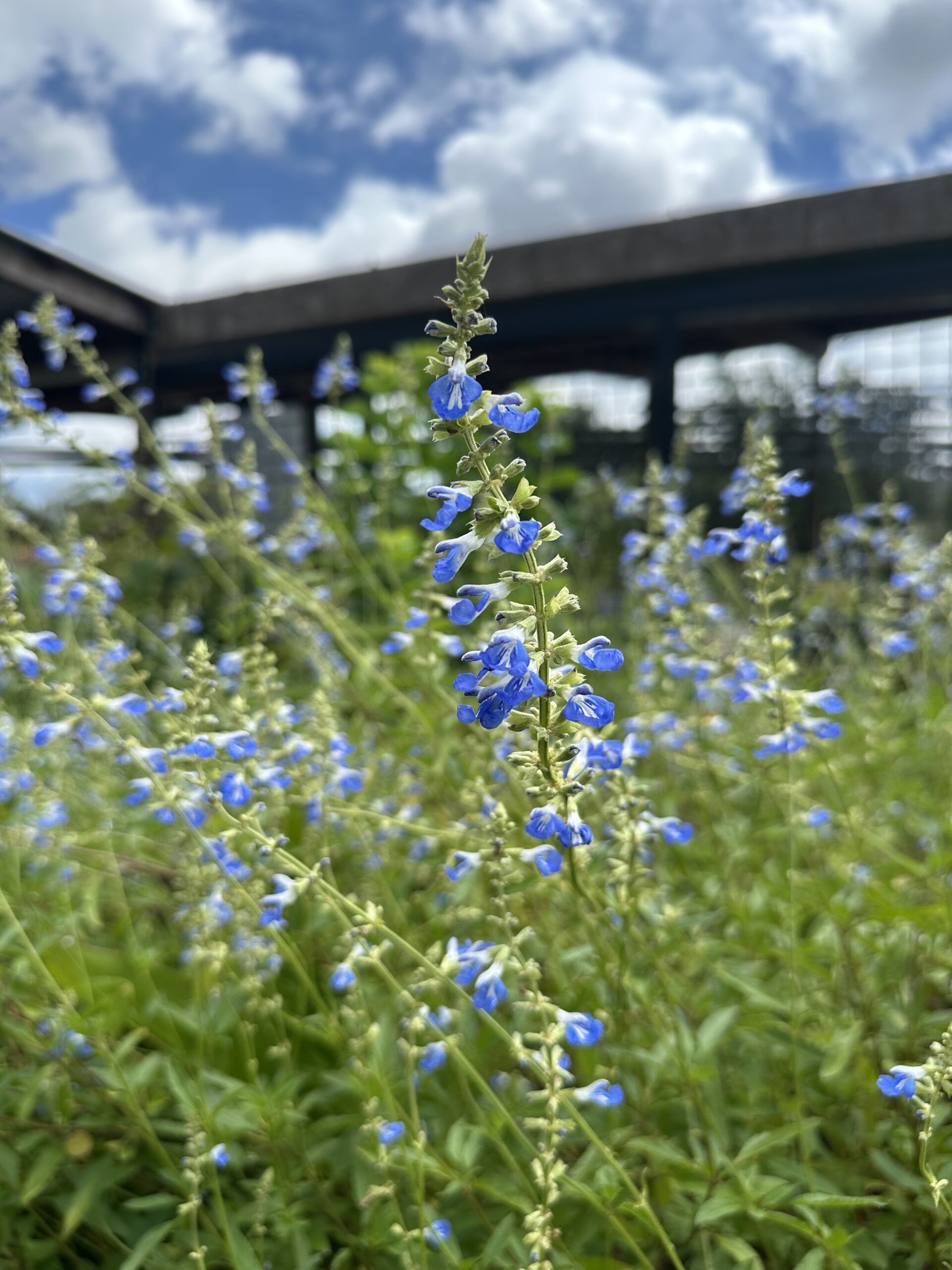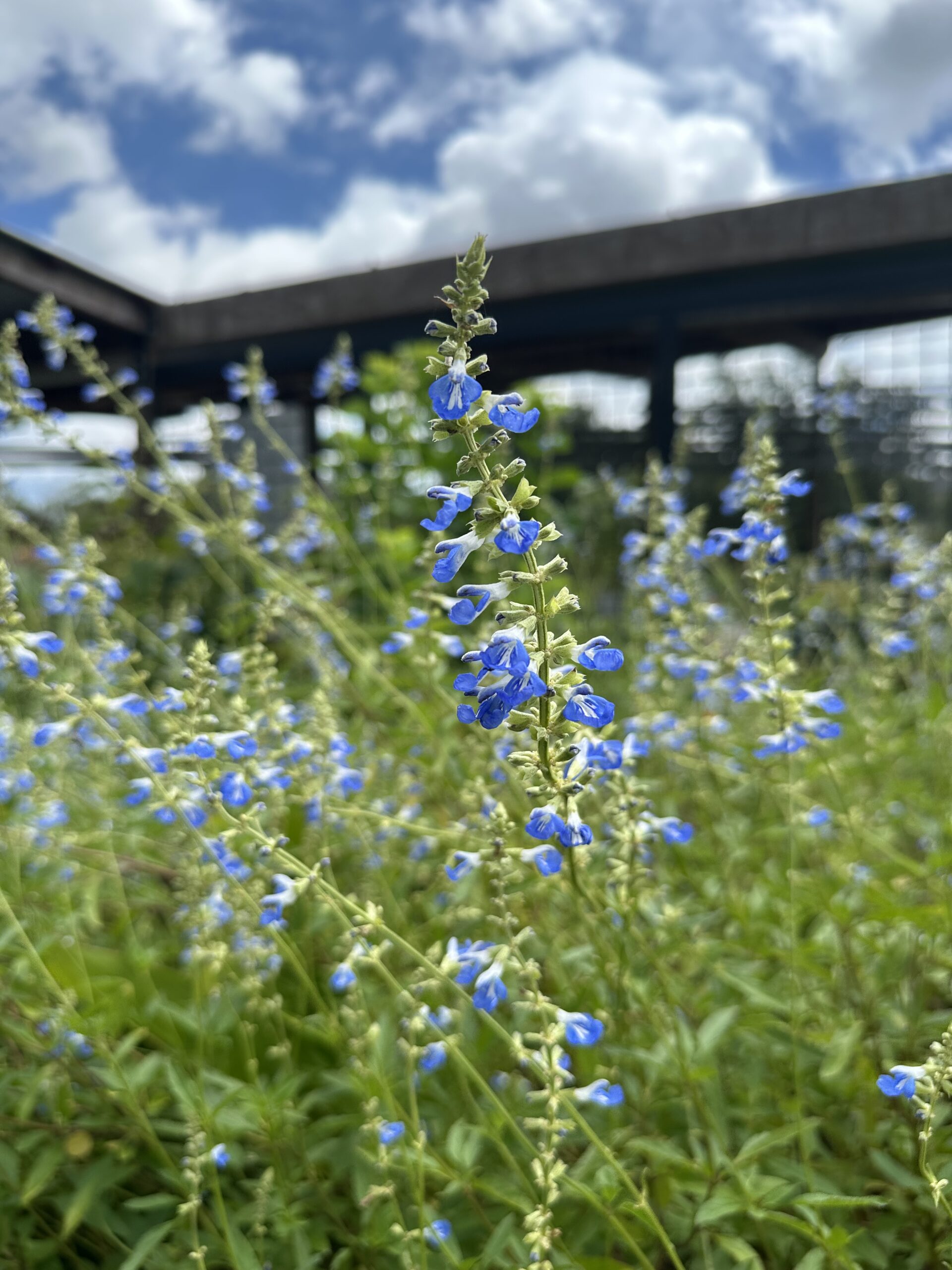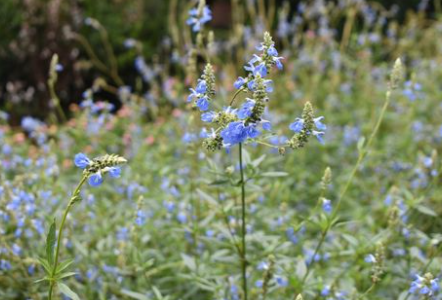Lamiaceae
blue sage
Salvia azurea
Other Common Names
bog sage, pitcher sage
Plant Type
Herbaceous Wildflower
Life Cycle
Perennial
Typical Size
5 ft. tall
4 ft. wide
Tolerant of
Deer, Drought, Occasional Flooding
Propagation
By seed, By cutting, By division
Plant Propagation Notes
Readily self-seeds. Does not require cold straficiation.
Plant Planting Notes
2 foot spacing
Wildlife Benefits
Nectar/pollen source for pollinating insects, Host plant for butterfly larvae, Nectar source for hummingbirds, Supports numerous caterpillars (bird food)
Leaves
Greyish-green. simple, opposite arrangement. Lanceolate shape
Flowers
Whorled around stem. 1 inch flowers
Fruit
Nulet, 1 inch in length

USDA Hardiness Zones
5, 6, 7, 8, 9
Light Exposure
Full Sun, Part Sun/Shade
Soil Moisture
Dry, Medium, Moist
Soil Drainage
Well-drained
Soil pH
Acidic (less than 6.0), Neutral (6.0-8.0)
Native in South Carolina?
Yes
Plant Native Habitat
Moist savannahs, open prairies
Global Conservation Status (NatureServe)
Apparently Secure (G4)
Federal Conservation Status (USFWS)
Not Listed
Distribution Notes
Common in the coastal plain. Uncommon in the piedmont. Absent from the mountains.
Subspecies
Salvia azurea var. azurea, Salvia azurea var. grandiflora



